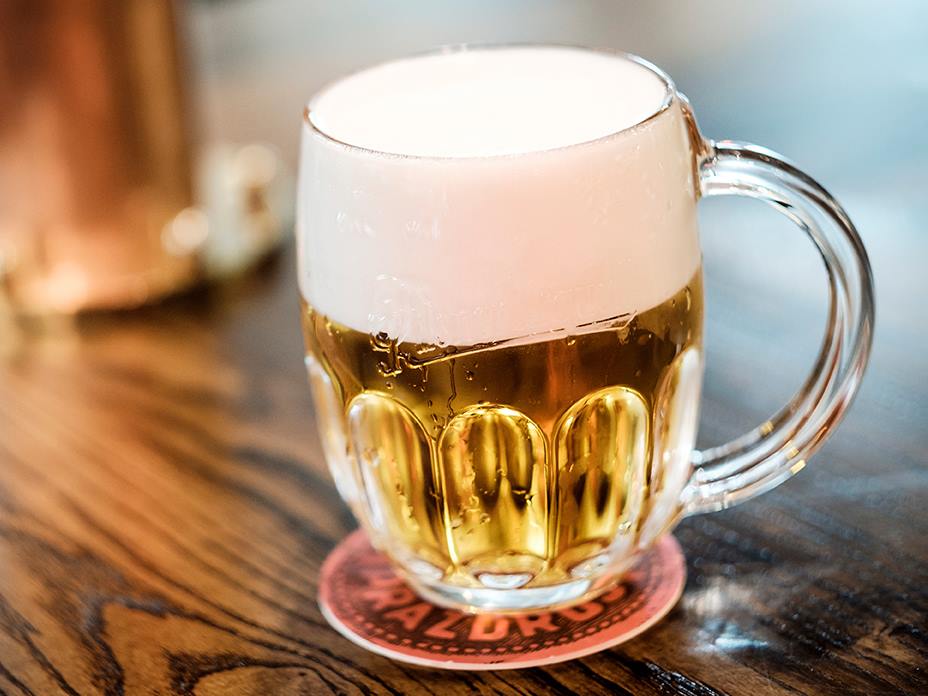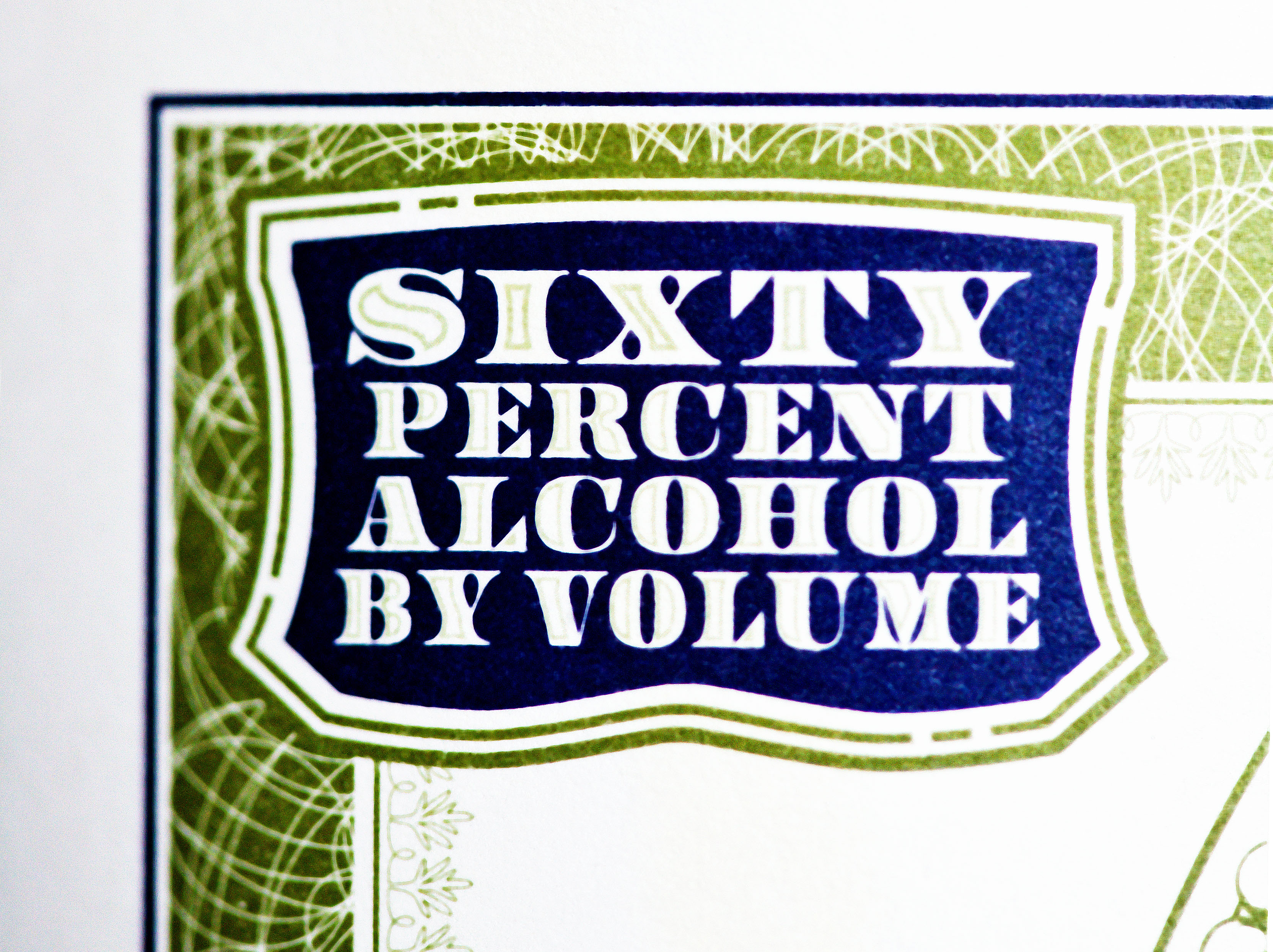|
Märzen
''Märzen'' () or ''Märzenbier'' () is a lager that originated in Bavaria, Germany. It has a medium to full body and may vary in colour from pale through amber to dark brown. It was the beer traditionally served at the Munich Oktoberfest. The geographical indication Oktoberfestbier is protected in the EU and can only be used for ''Märzen'' that is brewed in Munich. In Germany, Oktoberfestbier may also be called Festbier or Wiesn. History ''Märzen'' has its origins in Bavaria, probably before the 16th century. A Bavarian brewing ordinance decreed in 1553 that beer may be brewed only between 29 September (St. Michael's Day or Michaelmas) and 23 April (St. George's Day or Georgi), as the high summertime temperatures were more likely to cause off-flavoured beer due to elevated ambient fermentation temperatures. Märzen was brewed in March, with moderate and balanced hopping levels, malt and slightly higher alcohol content that would allow the beer to last while brewing new be ... [...More Info...] [...Related Items...] OR: [Wikipedia] [Google] [Baidu] |
Helles
Helles or hell is a traditional German pale lager beer, mainly produced in Southern Germany, particularly Munich. The German word ''hell'' can be translated as "bright", "light", or "pale". Flavour profile Helles-style beers are typically full-bodied, mildly sweet and light-coloured, with low bitterness. The beer is clear due to filtration before bottling, though some restaurants and breweries offer an unfiltered version. Munich-style helles is a yellow beer brewed using cool fermentation with a lager yeast such as ''Saccharomyces pastorianus'', bitter hops such as Hallertau hops, and an original specific gravity (prior to fermentation) between 1.044 and 1.053 (11 to 13 degrees plato), and between 4.5 and 6% alcohol by volume. Helles has a less pronounced hop flavour than German pilsner beers. History Until the 1960s, Helles was universally available in German-speaking regions. In many regions, Helles was slowly replaced by pilsner-style beers, which was also driven by ... [...More Info...] [...Related Items...] OR: [Wikipedia] [Google] [Baidu] |
Ayinger Brewery
Ayinger Brewery ( ; ) is in Aying, Bavaria, Germany, about 25 km south of Munich. Ayinger beers are exported to Italy, the United States, and the rest of Europe. Licensed production in UK For some years, a range of beer was brewed under the ''Ayingerbrau'' name by Samuel Smith Old Brewery in Tadcaster, England. Although the Ayinger logo was used, the recipes and range were different from those of the Ayinger Brewery. The arrangement ended in spring 2006, at which point Samuel Smith's rebranded the beers. Distribution of the Ayinger range of beer followed that summer. Oktoberfest Because the Oktoberfest in Munich does not allow breweries outside its city limits to participate, Ayinger Brewery organizes many smaller festivals in the countryside around Munich. Awards World Beer Championships 2007 World Beer Championships Ayinger posted these results at the 2007 World Beer Championships: *Celebrator Doppelbock - highest rated Doppelbock style *Jahrhundert-Bier - ... [...More Info...] [...Related Items...] OR: [Wikipedia] [Google] [Baidu] |
Żywiec Brewery
Żywiec Brewery () is one of the largest breweries and beer producers in Poland. Founded in 1856 in the town of Żywiec, the brewery manufactures pale lager with a 5.5% alcohol volume. Grupa Żywiec S.A. consists of five main breweries: Żywiec Brewery, Elbrewery, Leżajsk, Warka Brewery and Browar Namysłów. Currently, the Dutch Heineken Group (Heineken International Beheer B.V.), with a 99% shareholding, has control over its major operations. The brewery has the capacity of producing 5 million hls a year, making it the largest brewery in Grupa Żywiec. History The brewery started operating in 1856 in the town of Żywiec, which was then part of Austrian Poland."Żywiec" entry in It was owned by the Habsburg Imperial Family until its confiscation by the post-WWII Communist government of Poland. At the beginning of the 1990s a court case was started by the descendants of the original owners, who sued the Polish government demanding $77 millionRadio Free Europe report, 14 ... [...More Info...] [...Related Items...] OR: [Wikipedia] [Google] [Baidu] |
Švyturys
The Švyturys Brewery ''(English: Lighthouse)'' is Lithuania's second oldest brewery located in Klaipėda, Lithuania. It was founded in 1784 by the Reincke family of merchant seamen. The brewery is a part of Švyturys-Utenos alus and currently is owned by the Carlsberg Group, which controls Švyturys-Utenos alus through Baltic Beverages Holding. History The brewery in Klaipėda (former German name: Memel) was founded by merchant J. W. Reincke in 1784. Since then, the brewery's emblem has been adorned with the sea eagle that is also found on the Reincke family's coat of arms. In the 19th century, this brewery in the suburb of Friedrich merged with the brewery of landowner Theodor Preuss and became the town's main beer producer. It brewed traditional Bock beer, as well as Bavarian and Porter beers. The latter received an award in the Klaipėda International Business Fair back in 1883. The shareholder-owned Klaipėda brewery was one of the most highly regarded breweries in Int ... [...More Info...] [...Related Items...] OR: [Wikipedia] [Google] [Baidu] |
Plato Scale
The principal factors that characterize beer are bitterness, the variety of flavours present in the beverage and their intensity, alcohol content, and colour. Standards for those characteristics allow a more objective and uniform determination to be made on the overall qualities of any beer. Colour "Degrees Lovibond" or "°L" scale is a measure of the colour of a substance, usually beer, whiskey, or sugar solutions. The determination of the degrees Lovibond takes place by comparing the colour of the substance to a series of amber to brown glass slides, usually by a colorimeter. The scale was devised by Joseph Williams Lovibond. The Standard Reference Method (SRM) and European Brewery Convention (EBC) methods have largely replaced it, with the SRM giving results approximately equal to the °L. The Standard Reference Method or SRM is a system modern brewers use to measure colour intensity, roughly darkness, of a beer or wort. The method involves the use of a spectrophotomet ... [...More Info...] [...Related Items...] OR: [Wikipedia] [Google] [Baidu] |
Czech Beer
Beer () has a long history in what is now the Czech Republic, with brewing taking place in Břevnov Monastery in 993. The city of Brno had the right to brew beer from the 12th century, while Plzeň and České Budějovice (Pilsen and Budweis in German), had breweries in the 13th century. The most common Czech beers are pale lagers of the pilsner type, with a characteristic transparent golden colour, high foaminess, and lighter flavour. The Czech Republic has the highest beer consumption per capita in the world. The largest Czech beer breweries are Pilsner Urquell ( Plzeňský prazdroj, Gambrinus, Radegast, Master); Staropramen (Staropramen, Ostravar, Braník, Velvet); and Budweiser Budvar. Other top-selling brands include Krušovice, Starobrno, Březňák, Zlatopramen, Lobkowicz, Bernard, and Svijany. History During the Middle Ages, the Church began to brew beer on Czech territory. Among the oldest monastery breweries in Bohemia were Libušinka in Prague, at ... [...More Info...] [...Related Items...] OR: [Wikipedia] [Google] [Baidu] |
Beer In Austria
Beer in Austria comes in a wide variety of beer style, styles. There are many small breweries across the country, although a few large breweries dominate the market. The most common beer is ''Märzen''. Breweries Styrian breweries, in the south, include ''Gösser'', ''Puntigamer'', and ''Murau Brewery, Murauer''. ''Hirter'' is produced in the town of Micheldorf, Hirt in Carinthia. In Lower Austria, ''Egger'', ''Zwettler'', ''Schwechater'', and ''Wieselburger'' are brewed, and in Vienna ''Ottakringer''. From the more westerly parts of Austria come ''Kaiser'', ''Zipfer'' and ''Kapsreiter'' in Upper Austria. Freistadt in Upper Austria is also home to Freistädter Bier, a brewery owned and operated by those who own a house within the city walls. Continuing West, Salzburg (state), Salzburg is home to ''Stiegl'', as well as ''Augustiner Bräu'' and ''Edelweiss''. Wheat beer#Weissbier, Weizenbier (wheat beer) is the most popular type of beer in this region. From Tyrol (state), Tyrol ... [...More Info...] [...Related Items...] OR: [Wikipedia] [Google] [Baidu] |
Alcohol By Volume
Alcohol by volume (abbreviated as alc/vol or ABV) is a common measure of the amount of Alcohol (drug), alcohol contained in a given alcoholic beverage. It is defined as the volume the ethanol in the liquid would take if separated from the rest of the solution, divided by the volume of the solution, both at . Pure ethanol is lighter than water, with a density of . The alc/vol standard is used worldwide. The International Organization of Legal Metrology has ethanol (data page)#Properties of aqueous ethanol solutions, tables of density of water–ethanol mixtures at different concentrations and temperatures. In some countries, e.g. France, alcohol by volume is often referred to as degrees Gay-Lussac (after the French chemist Joseph Louis Gay-Lussac), although there is a slight difference since the Gay-Lussac convention uses the International Standard Atmosphere value for temperature, . Volume change Mixing two solutions of alcohol of different strengths usually causes a change in ... [...More Info...] [...Related Items...] OR: [Wikipedia] [Google] [Baidu] |
Lagering
Lager (; ) is a style of beer brewed and conditioned at low temperature. Lagers can be pale, amber, or dark. Pale lager is the most widely consumed and commercially available style of beer. The term "''lager''" comes from the German word for "storage", as the beer was stored before drinking, traditionally in the same cool caves in which it was fermented. As well as maturation in cold storage, most lagers are distinguished by the use of ''Saccharomyces pastorianus'', a "bottom-fermenting" yeast that ferments at relatively cold temperatures. Etymology Until the 19th century, the German word ''Lagerbier'' ( de) referred to all types of bottom-fermented, cool-conditioned beer in normal strengths. In Germany today, it mainly refers to beers from southern Germany, either "''Helles''" (pale) or "'' Dunkles''" (dark). Pilsner, a more heavily hopped pale lager, is most often known as "Pilsner", "Pilsener", or "Pils". Other lagers are '' Bock'', '' Märzen'', and '' Schwarzbier ... [...More Info...] [...Related Items...] OR: [Wikipedia] [Google] [Baidu] |
Lager
Lager (; ) is a Type of beer, style of beer brewed and Brewing#Conditioning, conditioned at low temperature. Lagers can be Pale lager, pale, Amber lager, amber, or Dark lager, dark. Pale lager is the most widely consumed and commercially available style of beer. The term "''lager''" comes from the German word for "storage", as the beer was stored before drinking, traditionally in the same cool caves in which it was fermented. As well as maturation in Refrigeration, cold storage, most lagers are distinguished by the use of ''Saccharomyces pastorianus'', a "bottom-fermenting" yeast that ferments at relatively cold temperatures. Etymology Until the 19th century, the German language, German word ''Lagerbier'' (:de:Lagerbier, de) referred to all types of top and bottom fermenting yeast, bottom-fermented, cool-conditioned beer in normal strengths. In Germany today, it mainly refers to beers from southern Germany, either "''Helles''" (pale) or "''Dunkel#Munich Dunkel, Dunkles''" (da ... [...More Info...] [...Related Items...] OR: [Wikipedia] [Google] [Baidu] |
Michaelmas
Michaelmas ( ; also known as the Feast of Saints Michael, Gabriel, and Raphael, the Feast of the Archangels, or the Feast of Saint Michael and All Angels) is a Christian festival observed in many Western Christian liturgical calendars on 29 September, and on 8 November in the Eastern Christian traditions. Michaelmas has been one of the four quarter days of the English and Irish financial, judicial, and academic year. In the Christian angelology of some traditions, the Archangel Michael is considered as the greatest of all the angels; being particularly honored for defeating the devil in the war in heaven. History The name Michaelmas comes from a shortening of "Michael's Mass", in the same style as Christmas (Christ's Mass) and Candlemas (Candle Mass, the Mass where traditionally the candles to be used throughout the year would be blessed). During the Middle Ages, Michaelmas was celebrated as a Holy Day of Obligation, but this tradition was abolished in the 18th century. ... [...More Info...] [...Related Items...] OR: [Wikipedia] [Google] [Baidu] |





